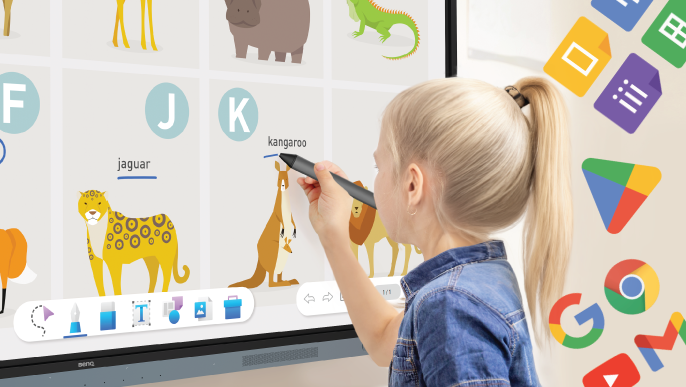Curated Apps for Interactive Displays or All-Out Access on Google Play?
Interactive displays are increasingly used in various settings such as classrooms, museums, corporate environments, and public spaces. The debate between using curated apps specifically designed for these displays versus allowing unrestricted access to all apps available on Google Play is significant. Here are several reasons why curated apps are often considered a better choice for interactive displays:
1. Optimized Performance and User Experience
- Tailored Functionality: Curated apps are specifically designed to leverage the unique features of interactive displays, such as multi-touch capabilities, large screen sizes, and specific resolution requirements.
- Enhanced Stability: These apps are tested to ensure they run smoothly on the designated hardware, reducing the risk of crashes and performance issues.
2. Educational and Professional Relevance
- Focused Content: Curated app stores offer content that is directly relevant to the user’s needs, whether it’s educational software for classrooms, presentation tools for businesses, or interactive exhibits for museums.
- Quality Assurance: Apps are vetted for quality, ensuring that users access high-quality, effective, and engaging tools rather than a wide array of potentially irrelevant or subpar apps.
3. Security and Privacy
- Controlled Environment: By limiting access to a curated selection of apps, organizations can better manage security risks. This reduces the likelihood of malware or malicious software being installed on the devices.
- Data Protection: Curated apps are often chosen for their compliance with privacy standards, ensuring that user data is handled responsibly and securely.
4. Ease of Use and Management
- Simplified Administration: IT departments and administrators can more easily manage and update a smaller, controlled set of applications. This reduces the complexity associated with maintaining and troubleshooting a wide range of apps.
- User-Friendly Interface: Users are presented with a streamlined selection of tools that are easier to navigate, improving the overall user experience.
5. Consistency Across Devices
- Standardization: Using curated apps ensures a consistent experience across multiple interactive displays. This is particularly important in environments like schools and businesses where uniformity can aid in training and support.
- Reliability: Apps chosen for their compatibility and reliability help maintain a consistent and predictable performance across all devices.
6. Support and Updates
- Dedicated Support: Curated app providers often offer better customer support and regular updates. This means any issues can be resolved more quickly, and users benefit from ongoing improvements and new features.
- Compatibility Updates: Ensuring that apps remain compatible with the latest versions of the display hardware and software, reducing downtime and disruptions.
7. Enhanced Learning and Engagement
- Interactive Features: Curated educational apps are designed to take full advantage of interactive display features, fostering greater engagement and interactivity among users.
- Pedagogical Value: Apps selected for educational use are often aligned with curriculum standards and pedagogical best practices, ensuring they provide real educational value.
Touchscreen learning apps designed specifically for interactive displays offer significant advantages over general free apps available on Google Play. They provide an optimized, ad-free, and secure learning experience, are designed to work seamlessly with interactive hardware, and come with quality assurance and support. These factors collectively enhance the educational value and usability of interactive display solutions, making them a more effective tool for modern learning environments.
To overcome the lack of competitive advantage in a shared app ecosystem like Google Play, brands can consider the following strategies:
- Customized Software Features: Developing proprietary software features or apps that enhance user experience and are exclusive to their devices.
- Differentiated Hardware: Innovating in hardware design, performance, and features that complement the app ecosystem.
- Strategic Partnerships: Forming alliances with developers or content providers to offer exclusive content or services on their devices.
- Brand Identity: Building a strong brand identity based on values, reputation, and customer relationships that go beyond the app ecosystem.
- Continuous Innovation: Investing in R&D to develop unique technologies or services that add value to the user experience.
By focusing on these strategies, brands can differentiate themselves in a competitive market despite sharing the same app ecosystem, ensuring they provide compelling reasons for consumers to choose their products over competitors.
Get in touch to find out more about Touchscreen Learning curated learning ecosystem

